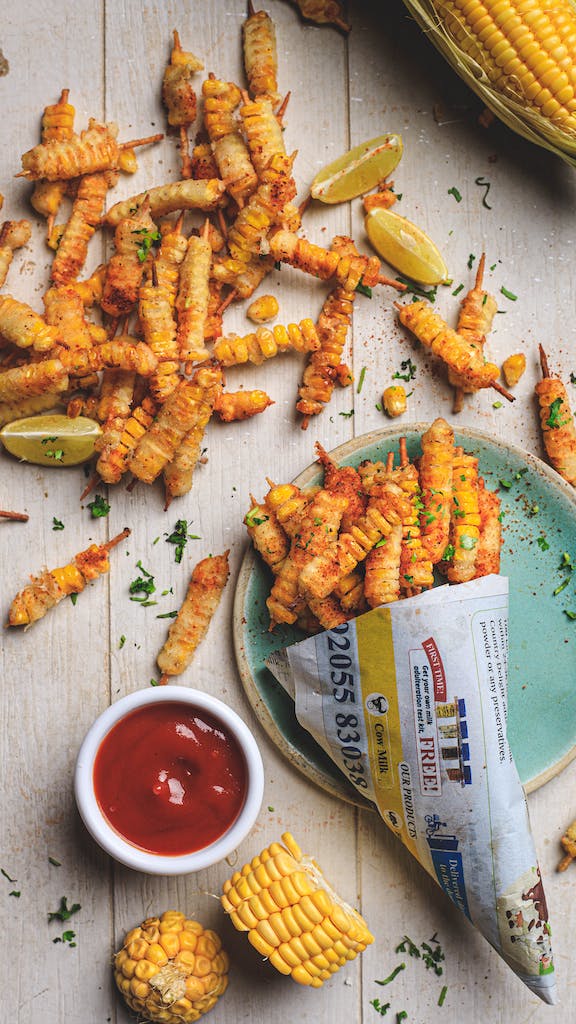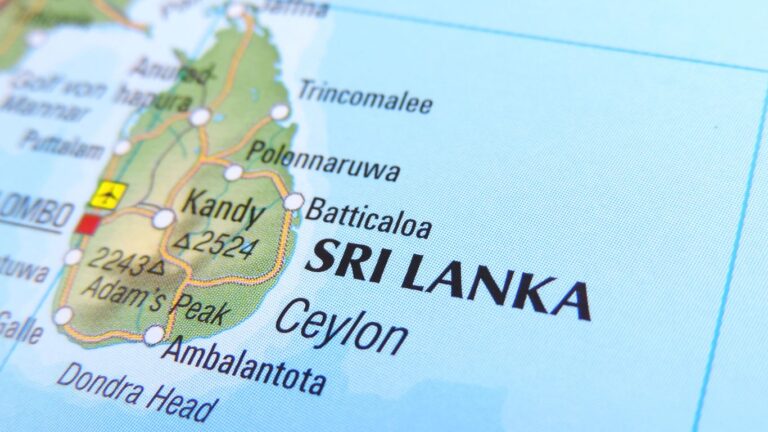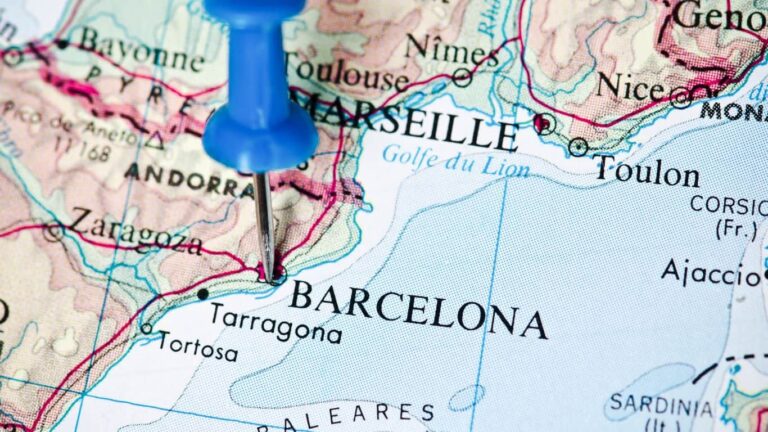Discover Gluten-Free Thailand: A Celiac Travel Guide
Thailand is known for its vibrant street food scene, tantalizing flavors, and welcoming culture. And with a bit of planning and knowledge, you can have a delightful gluten-free Thailand vacation. This guide will help you navigate attractions and gluten-free food, ensuring you enjoy the best of Thai cuisine without compromising your dietary needs.
Your trip to Thailand
Before embarking on your trip to Thailand, it’s important to understand the country’s unique culture. Thailand is known for its rich history, stunning landscapes, and welcoming people, but there are a few things travelers need to know before visiting.
Entry and Visa Requirements
For those wondering about the requirements for entering Thailand in 2024, the rules are generally straightforward. US and EU citizens can enter Thailand without a visa for up to 60 days under the Visa Exemption Program. However, if you plan to stay longer, you’ll need to apply for a visa in advance. Ensure your passport is valid for at least six months beyond your entry date, as this is a strict requirement for travelers. It’s also wise to check the latest health protocols and any travel advisories before your trip.
Safety and Travel Tips for Thailand
Many ask, “Is Thailand a safe place for me?” The answer is generally yes, as Thailand is one of the safer countries to visit in Southeast Asia. However, as with any destination, common sense should be applied. Be cautious with your belongings in crowded areas and avoid unlicensed taxis. Thailand is also known for its strict laws, particularly regarding the drinking age, which is 20 years old.
Top Attractions and Things to Do in Thailand
Once you’re in Thailand, there is no shortage of attractions. For those wondering where to go in Thailand, the country is filled with a diverse range of experiences. In Bangkok, visit the Grand Palace and Wat Pho for a cultural deep dive, or explore the bustling night markets. If you head north, Chiang Mai is known for its ancient temples, and serene mountain landscapes. Down south, Phuket is famous for its white-sand beaches and vibrant nightlife, making it a hotspot for tourism. No matter where you go, there are endless things to do in Thailand—from visiting elephant sanctuaries to taking boat tours around its many islands.
Understanding Gluten-Free Food Options in Thailand
Thai Food and Gluten Intolerance
Thai cuisine is rich and varied, often based on fresh ingredients like rice noodles, fresh fruit, and coconut milk. While many traditional Thai dishes are naturally gluten-free, such as Pad Thai, it’s essential to be cautious. Ingredients like soy sauce, oyster sauce, and fish sauce often contain gluten. Therefore, always double-check with restaurant staff and look for gluten-free soy sauce and oyster sauce.
Gluten-Free Street Food in Thailand
Thailand’s bustling street food culture is a dream for food lovers, and the good news is, that you don’t have to miss out just because you’re on a gluten-free diet. Many street food dishes are either naturally gluten-free or can be made gluten-free with a few simple adjustments.
- Papaya Salad (Som Tam): A spicy, tangy salad made from shredded green papaya, chilies, lime juice, and peanuts. It’s often gluten-free, but be sure to ask vendors to skip the soy sauce or fish sauce that may contain gluten.
- Mango Ice Cream: For an amazing sweet treat, try mango ice cream made with coconut milk, which is often gluten-free.
- Sticky Rice with Mango (Khao Niew Mamuang): This is one of Thailand’s most famous desserts, made with sticky rice, coconut milk, and ripe mango slices. Since it’s naturally gluten-free, it’s a safe and sweet option for gluten-free travelers.
- Pad Thai: This iconic street food is typically gluten-free when made with rice noodles. Just ensure it’s prepared without soy sauce.
- Grilled Fish (Pla Pao): Whole fish stuffed with lemongrass and grilled over an open flame is another naturally gluten-free street food option. It’s often served with a side of sticky rice and a spicy dipping sauce, but do ask about the sauce to ensure it’s free of gluten.
- Grilled Meats (Moo Ping or Kai Yang): These delicious skewers of marinated pork or chicken are typically gluten-free when grilled without any sauces containing gluten. To be sure, ask for them to be cooked without soy sauce or marinades containing wheat.
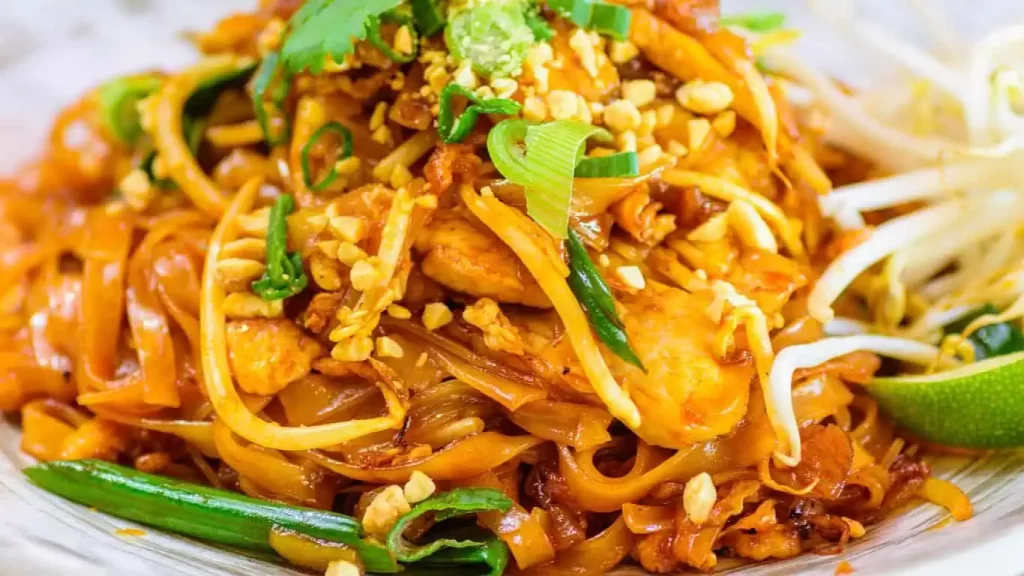
While most street food stalls in Thailand don’t have dedicated gluten-free menus, street vendors are generally open to customizing dishes. It’s essential to communicate your needs, particularly in avoiding cross-contamination, as some sauces like soy sauce and oyster sauce contain gluten. A handy tip is to carry a small bottle of gluten-free soy sauce with you to add it to dishes yourself.
When exploring street food markets in cities like Bangkok or Chiang Mai, look for vendors who specialize in freshly prepared foods, as they’re more likely to cater to your dietary needs on the spot. You can also download Thai-language celiac cards that explain your gluten intolerance to help ensure safe and delicious street food experiences throughout your gluten-free Thailand vacation.
Exploring Thai Desserts and Sweets
Don’t miss out on Thai desserts, which are often naturally gluten-free. Some options include:
- Sticky Rice with Mango: A classic dessert made with coconut milk and rice.
- Smoothie Bowls: Often gluten-free and made with fresh fruit.
- Thai Soups: Many are naturally gluten-free, but always check for added soy sauce or other gluten-containing ingredients.
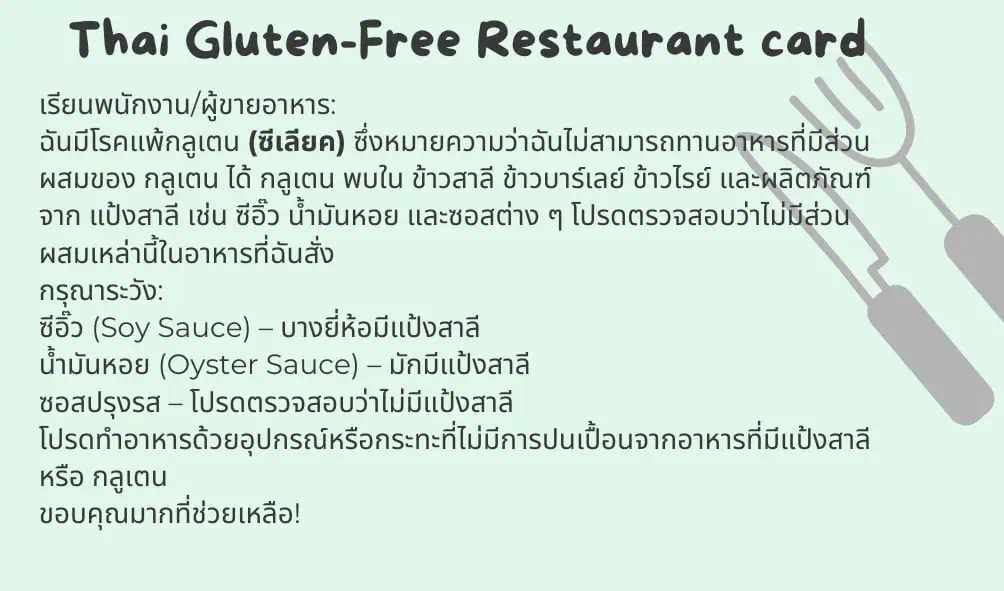
Navigating Major Cities and Local Markets
Chiang Mai
One of the most exciting ways to experience Chiang Mai’s food culture is by exploring its street food stalls and local markets. Fortunately, there are plenty of gluten-free street food options. Papaya salad (Som Tam) and grilled meats are commonly gluten-free, provided you confirm that no soy sauce or wheat-based sauces are used. Markets like the Chiang Mai Gate Market are bustling with food stalls where you can find naturally gluten-free dishes like sticky rice and mango desserts.
Chiang Mai also boasts several restaurants that specialize in gluten-free meals or are highly knowledgeable about gluten intolerance. These places are known for their ability to accommodate dietary restrictions and ensure a safe dining experience. Goodsouls Kitchen and Free Bird Café are two popular choices among gluten-free travelers, offering clearly labeled menus and staff trained to prevent cross-contamination. Here, you can enjoy dishes like gluten-free pancakes, salads, and stir-fries made with gluten-free soy sauce.
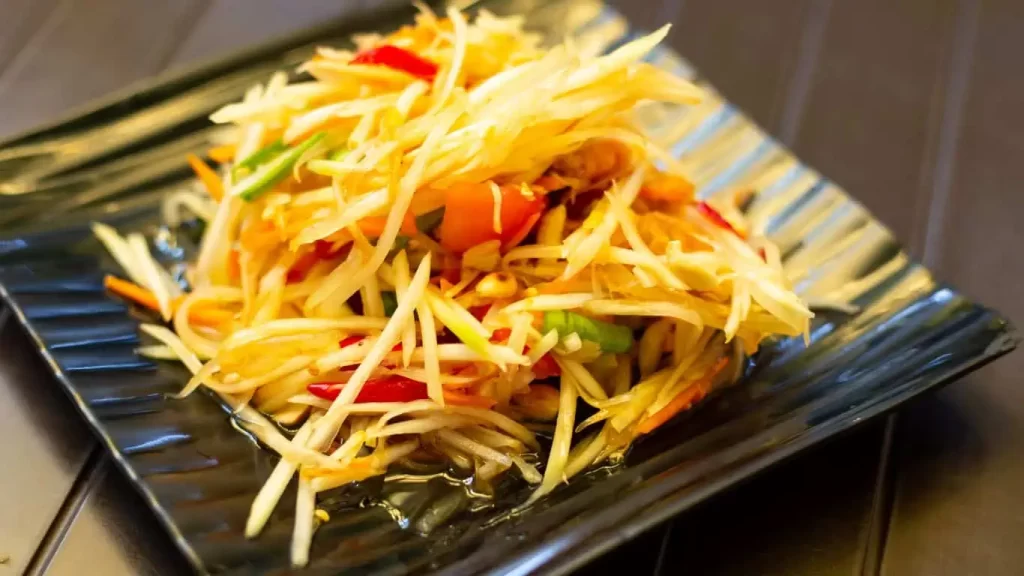
Koh Samui
Koh Samui offers a great selection of gluten-free options for travelers, ensuring you can enjoy the local cuisine without worry. Prego Samui, located near Chaweng Beach, provides a range of Italian-inspired dishes and gluten-free alternatives, including gluten-free pasta. Another excellent spot is the Greenlight Café, known for its health-conscious menu, offering various gluten-free options made with fresh and organic ingredients. If you’re looking for something a bit more upscale, The Cliff Bar and Grill offers stunning ocean views along with Mediterranean-style dishes, many of which can be made gluten-free upon request. These restaurants are well-versed in accommodating dietary restrictions, making Koh Samui an ideal destination for gluten-free travelers.

Phuket
Phuket is an excellent destination for gluten-free travelers seeking a relaxing beach vacation with delicious dining options. Many restaurants in Phuket are familiar with dietary restrictions, and some even offer dedicated gluten-free menus. Popular spots like Soul I Vegan Cafe & Restaurant Phuket and Gallery Cafe Old Town Phuket cater to gluten-free needs, serving dishes made from fresh, local ingredients. Be sure to explore the island’s seafood offerings, which are often naturally gluten-free, and ask for gluten-free soy sauce to enhance your dining experience. As always ask your waiter for more specific information about the dishes you want to order to make sure they fit your dietary requirements.

Tips for Enjoying Thai Cuisine Safely
Key Ingredients to Watch
Be mindful of ingredients that may contain gluten, such as:
- Fish Sauce: Some brands contain gluten. Opt for gluten-free versions.
- Oyster Sauce: This common sauce can contain wheat flour. Ensure it’s gluten-free or request an alternative.
- Wheat Flour: Used in many Thai dishes, especially in fried items and certain sauces. Request dishes made with rice flour or ensure no wheat flour is used.
When dining out, communication is key. Here are some tips:
- Celiac Travel Card: Use a celiac travel card in Thai to communicate your dietary needs. It helps in explaining your gluten-free requirements clearly.
- Restaurant Staff: Always inform the staff about your gluten intolerance and ask about cross-contamination risks.
- Dedicated Gluten-Free Restaurants: Seek out restaurants specifically catering to gluten-free diets for a more controlled dining experience.
Using Google Maps and TripAdvisor
Leverage Google Maps and TripAdvisor to find gluten-free restaurants and reviews from fellow travelers. Look for restaurants with clear gluten-free menus and positive feedback on their ability to handle food allergies and cross-contamination.
Grocery Stores in Thailand
If you prefer to cook your own meals, Thailand has excellent grocery stores and local markets where you can find fresh ingredients. Tesco Lotus, Big C and Makro offer many gluten-free products, including packaged foods, snacks, and sometimes fresh items. Larger stores and hypermarkets are more likely to have a broader selection. 7-Eleven generally has a limited range of gluten-free products. They might offer some gluten-free snacks and packaged foods, but options are usually more basic.
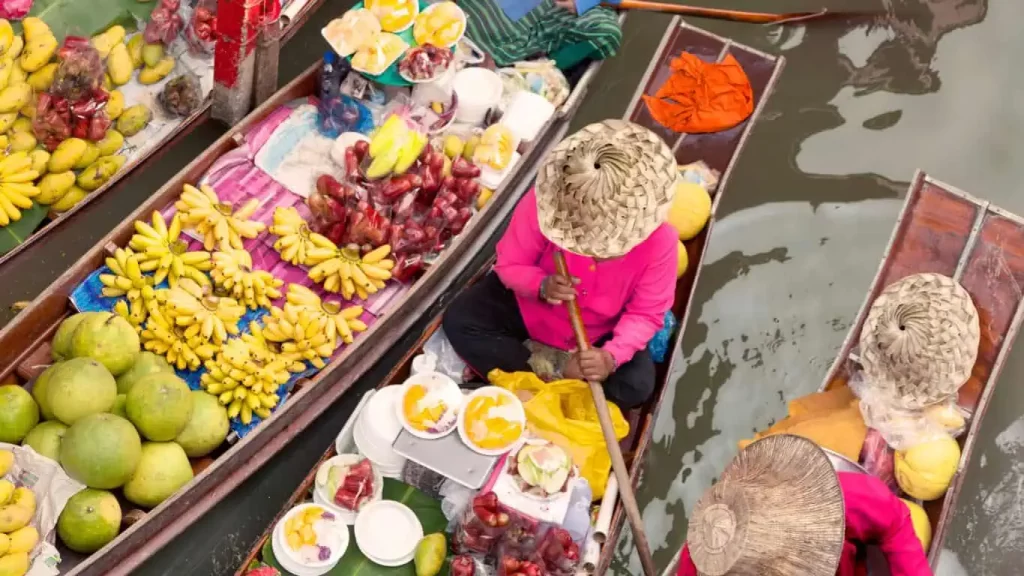
A trip to Thailand can be an amazing adventure, even for those with celiac disease or gluten sensitivity. With its naturally gluten-free staples like rice and fresh fruits and an increasing awareness of dietary restrictions, Thailand offers a wealth of options for gluten-free travelers. From the bustling streets of Bangkok to the serene beaches of Phuket, you can explore the rich culture and tantalizing flavors of Thai cuisine while staying safe and healthy.




